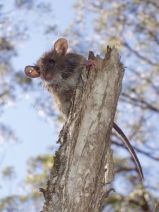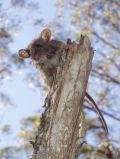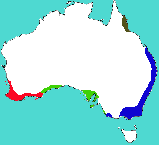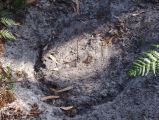TADPOLE PORTAL
The second confusing thing about Australia are the animals. They can be divided into three categories: Poisonous, Odd, and Sheep.
Jeremy Lee, "The confusing country"
A model system: alien predator vs. native prey

The red fox, Vulpes vulpes, belongs to the most famous and probably most harmful alien species in Australia. It was introduced several times in the 1860s and 1870s for hunting reasons. Within a few decades the red fox was declared a pest and has spread over almost whole Australia in the 1930s. Only the tropical north and Tasmania remained non invaded for a long time. Since the last decade of the last century, there is growing evidence that the red fox made it to Tasmania. As a generalised predator it is a main predator of small native (marsupial) mammals. There was no coevolution between the red fox and these marsupials. We therefore aimed to find out whether native small mammals are able to recognise the red fox as a predator and adapt behaviour according to red fox abundance/activity.
Our model prey species has been the bush rat, Rattus fuscipes. They belong to the true rats (genus Rattus) which originated in South-East Asia (also the rats spread in Europe originated there). Whereas they do not belong to marsupials, they are still considered to be native in Australia as they arrived at this continent more than one million years ago. Seven native Rattus species have evolved on Australia. The bush rat is the best known of these species. Being locally very abundant, it is a good model organism for ecological studies.
In 1996, the Department of Sustainability and Environment (DSE) started “Project Deliverance”, later named in “Southern Ark”. In the beginning, bait stations have been used to estimate activity (as an indirect measure of abundance) of red foxes and feral dogs. Since 1999, at some sites baits have been replaced by poisoned baits containing “1080” (treatment sites); in the following years fox activity was dramatically reduced. There have also still been sites with only unpoisoned meat baits (non treatment sites). Using bait take data and additional records of fox tracks allow measuring their activity and the efficiency of poisoned baits. Due to this set up, perfect conditions have been available to us to perform an ecological study facing the question “alien predator vs. native prey”. One of the main reasons to choose the bush rat as model organism was its high abundance in the study area.




